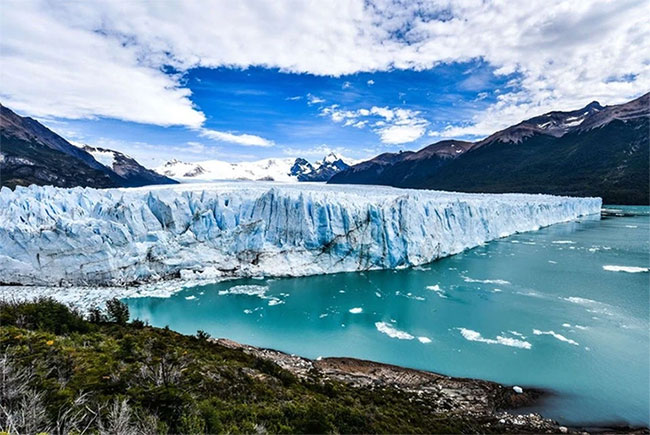China discovers thickest glacier on Qinghai-Tibet Plateau
Scientists have just discovered the thickest glacier on the Qinghai-Tibet Plateau (also known as the Qinghai-Tibet Plateau) - known as the water tower of Asia.

Purog Kangri Glacier. (Source: Reuters).
The ice field, which has a maximum thickness of nearly 400 meters, is part of the Purog Kangri glacier in Tsoyi County, Southwest China's Tibet Autonomous Region, according to researchers from the Chinese Academy of Sciences (CAS).
This shows that the Purog Kangri glacier is now the thickest glacier in the Qinghai-Tibet Plateau , usurping the title from the Guliya ice cap in Ngari province.
Glaciers contain important information about the Earth's climate history. Scientists previously drilled a 308.6m deep ice core at Guliya, which formed over 700,000 years ago.
What is a glacier?
A glacier is a body of perennial ice (of lower density than regular ice), which moves continuously under its own weight; it forms where snow accumulates and exceeds erosion over many years, often centuries.
What is the Qinghai-Tibet Plateau?
The Qinghai-Tibet Plateau (Chinese abbreviation of the Qinghai-Tibet Plateau) or Tibetan Plateau (25~40 degrees north latitude, 74-104 degrees east longitude) is the largest and highest land mass in the world, with an average elevation of over 4,500 meters above sea level, covering most of the Tibet Autonomous Region and Qinghai Province of China as well as Ladakh in Indian Kashmir. It occupies an area with a width and length of about 1,000 and 2,500 kilometers.
- The melted 15,000-year-old glacier could release new viruses
- Discover 42 new glaciers on the 'roof of the world'
- Ice melts in Tibet and threatens Vietnam
- Discover the 'cleanest place in the world'
- Giant cracks in Tibet can forecast horrific disasters
- China built an attractive wave detector telescope at an altitude of 5000m
- China will exploit burning ice
- 'Mars Village' is expected to cost about 61 million USD
- Discover the oldest fossil fossil in Tibet
- The climate heats up, threatening railways to Tibet
- 3D printed 180 m high hydroelectric dam on the Tibetan plateau
- China established the first Mars simulation base in Qinghai
 Is the magnetic North Pole shift dangerous to humanity?
Is the magnetic North Pole shift dangerous to humanity? Washington legalizes the recycling of human bodies into fertilizer
Washington legalizes the recycling of human bodies into fertilizer Lightning stone - the mysterious guest
Lightning stone - the mysterious guest Stunned by the mysterious sunset, strange appearance
Stunned by the mysterious sunset, strange appearance